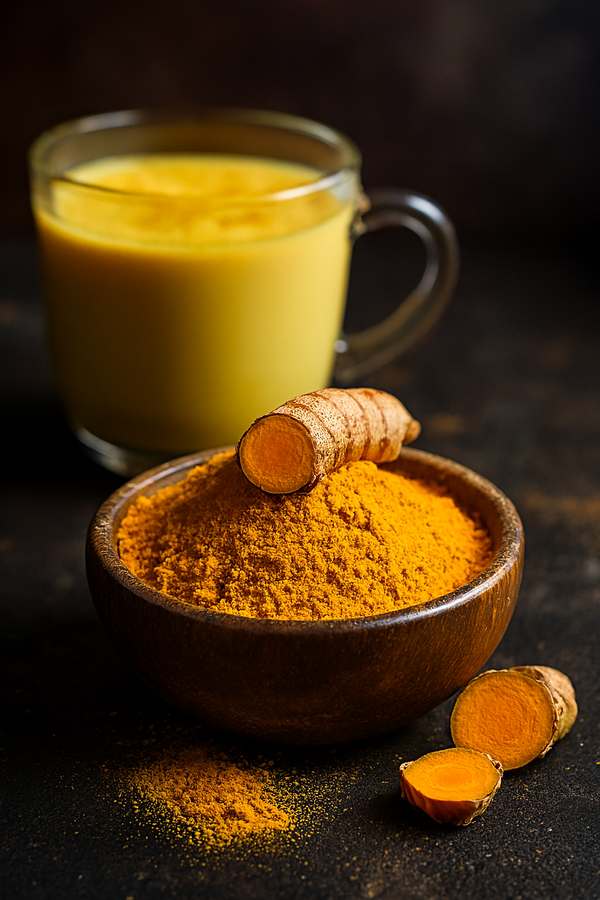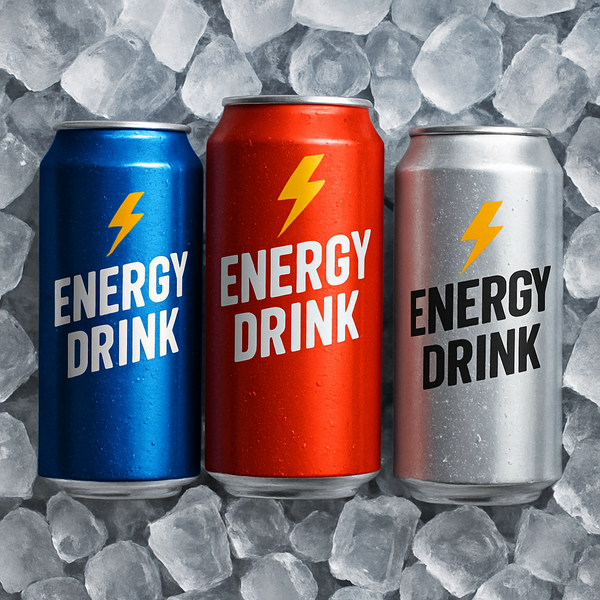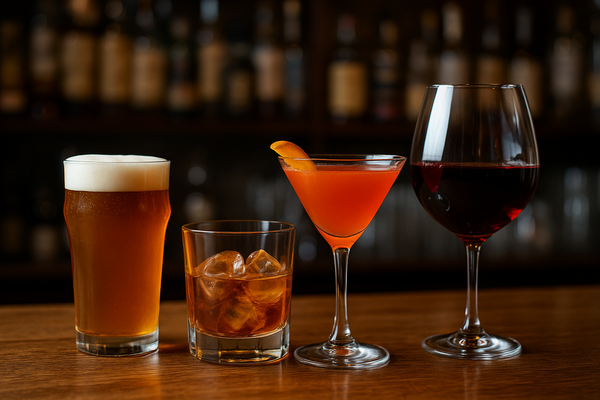Q&A: Are There Truly 'Negative-Energy' Foods?
Negative-energy' foods, like cold water and sugar-free gum, may burn more energy in digestion, though evidence is mixed. 'Free foods' such as celery, low in energy, may help individuals with weight management but don't create an energy deficit. A balanced diet and exercise are crucial.


Take-home messages:
|
Aspect |
Key Take-Home Messages |
|
Negative-Energy Foods |
'Negative-calorie', 'negative-energy',
'zero-net-calorie' foods or beverages are believed to burn more energy in
processing than they provide, potentially leading to a net energy deficit. |
|
Water-Induced Thermogenesis |
Drinking water at different temperatures can
expend some energy, but overall impact on metabolism is minor. Nonetheless,
substituting drinks high in energy with water can significantly contribute to
weight management by reducing overall energy intake. Therefore, drink lots of
clean, safe water. |
|
Chewing Gum |
Chewing gum for extended periods may slightly
increase energy expenditure, potentially surpassing the energy content of the
gum itself. It can affect eating habits, such as reducing the tendency to
snack and moderating appetite, though it does not substantially decrease
total energy intake. Xylitol in gum is beneficial for reducing dental
cavities. However, consuming large quantities of sorbitol-containing gum can
lead to chronic diarrhea and significant weight loss. |
|
Free Foods vs. Negative-Energy Foods |
'Free' foods such as celery, cucumbers and
leafy greens are low in energy and carbohydrates, playing an important role
in diets but not equivalent to negative-energy foods. Their primary function
is to help reduce overall energy intake by providing satiety with minimal
energy. |
|
Negative Energy Illusion |
The perception that a meal with both
high-energy and low-energy foods contains fewer kJ than the high-energy food
alone. This illusion can lead to underestimating a meal's total energy
content, particularly among those more concerned with weight management.
Understanding this bias is essential to accurately estimating food energy
values and avoiding potential dietary pitfalls that could lead to weight
gain. |
|
Diet and Exercise |
Balanced diet including the consumption of
safe, clean, water and regular exercise are emphasised as the most effective
approach to weight management and health. |
Introduction📘
Food energy is commonly expressed in kilocalories (kcal, often simply called calories) or kilojoules (kJ), with kilojoules being the international standard unit for energy. To convert calories to kilojoules, multiply the number of calories by 4.2. The fascination with 'negative-calorie', 'negative-energy', or 'zero-net-calorie' foods and beverages emerges from their potential role in nutrition and weight management strategies [1]. If they exist, incorporating these items into a diet might lead to an energy deficit, thereby facilitating weight loss that may prove substantial over time. These are foods or drinks purported to create a unique metabolic scenario: the energy expended to process them (through digestion, absorption, transportation, metabolism and storage of nutrients) supposedly surpasses the energy they provide. This phenomenon hinges on the 'thermic effect of food', also known as specific dynamic action or energy or diet-induced thermogenesis, which is the energy required for the body's processing of food [1, 2]. The concept of negative-calorie foods has gained traction and popularity over the years, partly due to the publication of diet books such as "Foods That Cause You To Lose Weight" by Neal Barnard, first published in 1992 and then in 1999 [3], and "The Negative Calorie Diet" by Rocco DiSpirito, released in 2015-2016 [4]. These works have contributed to the widespread recognition of the idea [1].
This examination delves into the reality of negative energy foods, focusing on water, chewing gum and celery to evaluate the scientific support for their classification as such. It seeks to clarify whether these items indeed result in a net energy loss and to differentiate between so-called negative-energy foods and 'free' foods. While 'free' foods are low in energy and carbohydrates, beneficial for managing certain health conditions, they may not achieve the same metabolic effect as negative-energy foods. Additionally, this exploration addresses the 'negative energy or calorie illusion', shedding light on the complexities of dietary perceptions and their implications for nutrition practices.
Water as a Possible Negative Energy Food: The Role of Temperature in Energy Expenditure💧🌡️
Water, while devoid of any energy content, can potentially act as a negative energy food due to the energy expended by the body to warm ingested water to its internal temperature, an effect known as water-induced thermogenesis. Drinking water at a temperature different from the body's will expend some energy to maintain the body’s internal temperature, a phenomenon known as the water-induced thermogenesis effect. Because it requires one kilocalorie of heat energy to raise the temperature of 1 kg of water by 1°C, heating 250 g (the amount in a normal glass) of water from 3 to 4°C (refrigerator temperature) to body temperature, approximately 37°C, requires 33.5 kcal/1000 g × 250 g, which equals 8.375 kcal or 35.18 kJ. Boschmann and colleagues [5] found that drinking 500 ml of water boosted the metabolic rate by 30%, a significant increase compared to other studies. In contrast, most studies summarised by Brown et al. [6] did not observe any increase, although two studies did report slight increases of 2.7% [7] and 2% [8], respectively.
In an effort to replicate Boschmann and team's findings [5], Brown and colleagues [6] explored the thermogenic effect of water and its potential variation with osmolality, a measure of solute concentration in a solution, or temperature. They concluded that neither distilled nor saline water increased energy expenditure. Interestingly, they observed an energy expenditure increase with sugar (sucrose) water. The study noted a modest 4.5% increase in energy use over 60 minutes when participants consumed water at 3°C in a quantity of 7.5 ml per kg of body weight. This finding suggests that while water, in general, may not have a substantial thermogenic effect, specific types of water or conditions may slightly elevate energy usage.
While water-induced thermogenesis or osmolality may not significantly increase energy expenditure, replacing high-energy containing beverages, such as sugary sodas (often termed 'empty calorie' or ‘empty energy’ drinks because they provide a high amount of energy with minimal nutritional value), with water can lead to weight loss [9]. One of the dietary guidelines recommended by nutrition experts, is the consumption of ample amounts of clean and safe water [10]. However, it's important to balance water intake, as excessive consumption can lead to water intoxication, a condition where the balance of electrolytes in the body is disrupted [11].
Chewing gum sweetened with artificial sweeteners as a possible negative energy food🍬🫣
Chewing gum, especially the sugar-free variety aimed at freshening breath and oral hygiene rather than bubble gum designed for bubble blowing, may be considered for its minor negative-energy potential due to the energy spent during mastication. However, its potential for energy expenditure is limited because the thermic effect of food is lessened when the food bypasses substantial chewing or digestion processes.
Table: How to distinguish between chewing gum and bubble gum
|
Aspect |
Chewing Gum |
Bubble Gum |
|
Base Ingredient |
Gum base (synthetic or natural), sweeteners (sugar alcohols such as
xylitol, sorbitol), flavourings |
Gum base (specifically formulated for elasticity), sweeteners, flavourings |
|
Texture |
Firmer and less elastic |
Softer and highly elastic |
|
Purpose |
Primarily for freshening breath, relieving stress, aiding in oral
hygiene |
Primarily for blowing bubbles |
|
Flavour Longevity |
Generally, longer-lasting flavour |
Flavour may fade quicker as focus is on bubble-blowing capacity |
|
Consistency |
Tends to be more consistent in texture over time |
Becomes more pliable and stretchable with chewing |
|
Bubble Blowing |
Not typically designed for bubble blowing |
Specifically designed for large bubble blowing |
|
Availability |
Widely available in various forms (strips, pellets, sticks) |
Often targeted towards younger consumers, available in various shapes
and colours |
Footnote: The 'ol' at the end of xylitol and sorbitol indicates they are sugar alcohols.
Chewing, or mastication, incurs a modest energy expenditure of approximately 46.2 kJ (11 kcal) per hour [12], a figure considerably lower than the 1000–3000 kJ (240–720 kcal) per hour burned through traditional forms of exercise, depending on their intensity and type [11]. Considering that a single piece of gum—whether a strip, pellet or stick—contains about 42.0 kJ (10 kcal), one would need to chew continuously for over an hour just to neutralise the energy ingested from the gum itself.
This analysis positions chewing gum as a potential energy-negative food, provided it is chewed for a sufficient duration to burn more energy than it delivers. However, it's important to recognise that while mastication does not significantly contribute to energy expenditure, chewing gum can still offer benefits beyond energy balance, such as aiding in appetite control and reducing overall energy intake (as detailed in the table below). Also the sugar alcohols used to sweeten chewing gum might be beneficial, because xylitol seems to reduce the occurrence of dental caries (as summarised in a systematic review and meta-analysis [13]).
It is important to emphasise that habitual gum chewing should not be regarded as a substitute for a balanced diet and regular physical activity, which remain the cornerstone practices for effective weight management. A word of caution is also warranted: case studies have reported that excessive consumption of sugar-free gum containing sorbitol may lead to chronic diarrhoea and severe weight loss [14]. Furthermore, a pilot study presented at the American Chemical Society Spring 2025 meeting found that both natural and synthetic chewing gums can release microplastic particles into saliva—particularly in higher amounts at the start of chewing—potentially contributing to human microplastic ingestion [15]. This suggests that chewing the same gum for longer may be preferable to starting with a new piece.
Table: The relationship between chewing gum and weight loss
|
Aspect |
Description |
Citations |
|
Energy Burn |
Gum chewing burns a small number of energy, primarily through the
energy expended during mastication. Choose sugar-free gum to avoid extra
energy. |
[12] |
|
Gum Chewing while Walking |
Increased walking distance and energy expenditure in both men and
women, especially those aged 40+ |
[16] |
|
Appetite Suppression, Satiety and Cravings |
Reduces appetite and increases satiety shortly after chewing, without
changing blood markers. Tasteless gum may decrease impulsive eating but does
not alter overall energy intake. |
[17-19] |
|
Snack Reduction |
May reduce snack and sugary food intake by altering reward pathways.
If it replaces healthy snacks like fruit, diet quality may decrease. |
[18-20] |
|
Meal Frequency and Size |
Gum chewing before meals can affect meal frequency and size, with
mixed results on overall energy intake. |
[19] |
|
Chewing gum alone
is unlikely to facilitate significant weight loss because it does not seem to
lower total energy intake [19] and an 8-week randomised
controlled trial (the golden standard study design to test cause and effect)
found no weight loss advantage from chewing gum for 90 min/day alongside
nutritional advice [21]. |
[19, 21] |
For those who do not find chewing gum appealing, evidence from a summary of 17 trials suggests that increasing the number of chews per bite of actual food can help control cravings by promoting a longer-lasting sense of fullness, thereby offering similar benefits. [22].
Celery as a possible negative energy food🥬🔍
Celery is often mentioned as a food that might use more energy to digest than it provides (67 kJ or 16 kcal per 100 g), making it a candidate for a ‘negative energy’ food. Research in this area includes a study where one person ate raw and liquefied celery, finding they burned more energy digesting it than the celery had (as reviewed by [1]). Another study with fifteen women showed that after eating 100g of celery, the energy used for digestion (thermic effect of food) was 86% of the energy intake from the celery itself [23]. However, this did not lead to a negative energy balance. Further research using bearded dragons, chosen for their similarity to humans being omnivorous and willing to eat celery in how they digest food, also found a net energy gain from eating celery [1]. This suggests that while low-energy, high-fibre foods like celery can help with weight management, they work by reducing the amount of energy your body keeps, not by being ‘negative energy’ foods. Given the findings that celery does not result in a negative energy balance but can support weight management efforts due to its high fibre and water content, it is more precise to categorise celery as a "free food" in dietary contexts.
Free foods🥕🍅
Individuals with diabetes or those monitoring their dietary intake are likely familiar with the concept of 'free foods,' which are considered nutritionally insignificant and were once thought to be energy-negative until more research became available. Defined as any food or beverage that contains fewer than 84 kJ (20 calories) or less than 5 grams of carbohydrate per serving, these items play a crucial role in dietary management for those needing to control blood sugar levels and overall caloric intake [24]. Note that one should not confuse these foods with empty energy/calorie foods which are on the opposite side of the spectrum providing huge amounts of energy while lacking in micro-nutrients (vitamins and minerals).
Examples of free foods include celery, berries, grapefruit, carrots, tomatoes, cucumbers, watermelon, apples, zucchini (baby marrow), broccoli, cabbage and lettuce among others. When Buddemeyer et al. [25] tested the validity of celery as a negative energy foods (to take its “free food” categorisation further to being a negative-energy food) in lizards. They concluded that celery contains more energy than needed for digesting and assimilation and do not result in an energy deficit, but overall the inclusion of low energy dense foods do contribute to a negative energy budget and thus weight loss in those who are physically active.
Diets based on so-called negative-calorie foods—or, more appropriately, free foods—do not lead to weight loss because they cause an energy deficit through digestion. Rather, they are effective because they satisfy hunger by filling the stomach with low-energy-dense foods, which, when combined with physical activity, can result in a net energy deficit.
However, a word of caution is needed because studies indicate that people would underestimate the energy content of a food/meal when a healthy food such as free food is present a phenomenon coined by Chernev as the 'negative calorie illusion''[26-28].
Negative energy or calorie illusion🧠✨
The ‘negative energy illusion’ is a psychological effect where individuals judge the energy content of a meal combining high-energy and low-energy foods to be lower than the high-energy food alone [26-28]. This counterintuitive bias suggests that the inclusion of a healthy item can distort one’s perception of the meal’s total energy content.
Participants estimated a meal consisting of both a vice (e.g., cheeseburger) and a virtue food (e.g., celery sticks) to contain less energy than the vice food on its own [27, 29]. This demonstrates how adding healthy components can mislead individuals into underestimating the overall energy value of a meal. Paradoxically, Chernev [27], observed that those who were more concerned with their body weight and management thereof (the 'weight-conscious') were more prone to this bias.
Dietitians should educate their patients on how to estimate a food’s energy value more accurately and not to be deceived by the presence a healthy food that could lead to a perceptual bias and ultimately weight gain. However, further research has yielded inconsistent results regarding this illusion [28], suggesting it may depend on specific factors such as contrast effects or the use of anchoring to address people's limited knowledge of energy counts, highlighting the complex nature of how we estimate and perceive energy content in food pairings.
Conclusion✅📊
Although the concept of negative-energy foods, including both cold or hot water and chewing gum, may seem appealing, their actual impact on weight management is minimal. There remains a need for further comprehensive research to conclusively determine the scientific validity of negative-energy foods and beverages.
While incorporating low-energy, nutrient-rich foods such as 'free foods', fruits and vegetables into one's diet is beneficial for weight management and overall health, it's important to understand that these should not be viewed as creating a negative energy balance. Caution is advised due to the negative energy illusion phenomenon, as it may lead to misunderstandings about diet and energy consumption that do not support healthy weight management practices. Ultimately, the most effective and healthful approach to weight management or maintenance is not through seeking out supposed negative-energy foods, but rather through maintaining a balanced diet and engaging in regular physical activity.
Reflections🤔💭
· Take a closer look at the 'free' foods within your diet—those low in energy and carbohydrates like vegetables and certain fruits. Assess how they fit into your overall energy intake and nutrition. Are they helping you feel fuller without significantly adding energy? Reflect on whether there are opportunities to enhance your dietary choices by incorporating more ‘free’ foods to improve satiety.
· While the concept of negative-energy foods is intriguing, it's important to question their true impact on weight management. For instance, could substituting sugary drinks with cold or hot water help reduce your energy intake? If you are regularly snacking on higher energy dense foods such as sweets and chips consider chewing gum instead. If you're a regular gum chewer, ponder on whether it is affecting your appetite, hunger levels and your snacking behaviour.
· Start paying closer attention to the nutritional information on the food packages, particularly the energy content per 100 g. This practice can improve your understanding of how different foods contribute to your daily energy intake.
Love what you’re reading? Share the knowledge! 📨 Forward this link to a friend who might also enjoy it.
References📚
1. Buddemeyer, K.M., A.E. Alexander, and S.M. Secor, Negative calorie foods: An empirical examination of what is fact or fiction. bioRxiv, 2019: p. 586958.
2. Calcagno, M., et al., The thermic effect of food: a review. Journal of the American college of nutrition, 2019. 38(6): p. 547-551.
3. Barnard, N., Foods that Cause You to Lose Weight: The Negative Calorie Effect. 1999: Harper Collins.
4. DiSpirito, R., The Negative Calorie Diet: Lose Up to 10 Pounds in 10 Days with 10 All You Can Eat Foods. 2015: HarperCollins.
5. Boschmann, M., et al., Water-Induced Thermogenesis. The Journal of Clinical Endocrinology & Metabolism, 2003. 88(12): p. 6015-6019.
6. Brown, C.M., A.G. Dulloo, and J.-P. Montani, Water-Induced Thermogenesis Reconsidered: The Effects of Osmolality and Water Temperature on Energy Expenditure after Drinking. The Journal of Clinical Endocrinology & Metabolism, 2006. 91(9): p. 3598-3602.
7. Komatsu, T., et al., Oolong tea increases energy metabolism in Japanese females. J Med Invest, 2003. 50(3-4): p. 170-5.
8. Brundin, T. and J. Wahren, Whole body and splanchnic oxygen consumption and blood flow after oral ingestion of fructose or glucose. Am J Physiol, 1993. 264(4 Pt 1): p. E504-13.
9. Fresán, U., et al., Substitution models of water for other beverages, and the incidence of obesity and weight gain in the SUN cohort. Nutrients, 2016. 8(11): p. 688.
10. Bourne, L., et al., Drink lots of clean, safe water: a food–based dietary guideline for South Africa. 2013.
11. Whitney, E.N., et al., Understanding nutrition. 2019: Cengage AU.
12. Levine, J., P. Baukol, and I. Pavlidis, The energy expended in chewing gum. N Engl J Med, 1999. 341(27): p. 2100.
13. Janakiram, C., C.V. Deepan Kumar, and J. Joseph, Xylitol in preventing dental caries: A systematic review and meta-analyses. J Nat Sci Biol Med, 2017. 8(1): p. 16-21.
14. Bauditz, J., et al., Severe weight loss caused by chewing gum. BMJ, 2008. 336(7635): p. 96-97.
15. Froum, S., 1. Clinical Tips Microplastics in chewing gum and practical ways to reduce exposure April 2, 2025 A presentation given at the American Chemical Society recently revealed that chewing gum could introduce microplastics into the body. Does this mean we have to stop chewing gum? Dr. Scott Froum looks at the findings and explores ways to reduce exposure to microplastics.
16. Hamada, Y., et al., Gum chewing while walking increases walking distance and energy expenditure: A randomized, single-blind, controlled, cross-over study. Journal of Exercise Science & Fitness, 2021. 19(3): p. 189-194.
17. Xu, J., et al., The effect of gum chewing on blood GLP-1 concentration in fasted, healthy, non-obese men. Endocrine, 2015. 50(1): p. 93-8.
18. Ikeda, A., et al., Chewing Stimulation Reduces Appetite Ratings and Attentional Bias toward Visual Food Stimuli in Healthy-Weight Individuals. Front Psychol, 2018. 9: p. 99.
19. Swoboda, C. and J.L. Temple, Acute and chronic effects of gum chewing on food reinforcement and energy intake. Eat Behav, 2013. 14(2): p. 149-56.
20. Lu, Y., X. Wang, and T.C. Wallace, Chewing Gum Is Associated with Better Diet Quality but Not Oral Health Measures in US Adults. Journal of the American Nutrition Association, 2024: p. 1-8.
21. Shikany, J.M., et al., Randomized controlled trial of chewing gum for weight loss. Obesity (Silver Spring), 2012. 20(3): p. 547-52.
22. Miquel-Kergoat, S., et al., Effects of chewing on appetite, food intake and gut hormones: A systematic review and meta-analysis. Physiology & Behavior, 2015. 151: p. 88-96.
23. Clegg, M. and C. Cooper, Exploring the myth: Does eating celery result in a negative energy balance? Proceedings of the Nutrition Society, 2012. 71(OCE3): p. E217.
24. Mahan, L.K. and S. Escott-Stump, Krause's food & nutrition therapy. (No Title), 2008.
25. Buddemeyer, K.M., A.E. Alexander, and S.M. Secor, Testing the validity of “negative-calorie” foods with a reptile model. evolution. 21: p. 22.
26. Forwood, S.E., et al., Underestimating calorie content when healthy foods are present: an averaging effect or a reference-dependent anchoring effect? PLoS One, 2013. 8(8): p. e71475.
27. Chernev, A., The Dieter's Paradox. Journal of Consumer Psychology, 2011. 21(2): p. 178-183.
28. FORWOOD, S. and T. MARTEAU, The elusive negative calorie illusion: replicating Chernev’s calorie estimate findings. Appetite, 2012. 59(2): p. 626.
29. Wang, Z. and T. Begho, Investigating cognitive biases: Does halo effect from nutrition or health claims drive negative calorie illusion in food combinations? International Journal of Food Science & Technology, 2024. 59(1): p. 208-218.
In the process of creating this work, the author employed ChatGPT 4 to perform language editing.




